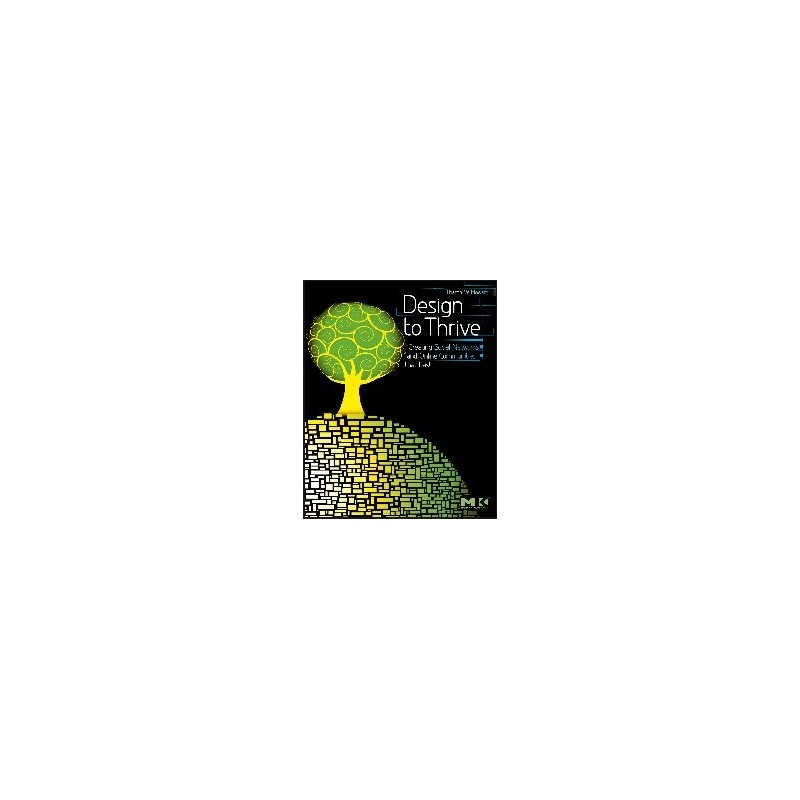- Obecnie brak na stanie



Social networks and online communities are reshaping the way people communicate, both in their personal and professional lives. What makes some succeed and others fail? What draws a user in? What makes them join? What keeps them coming back? Entrepreneurs and businesses are turning to user experience practitioners to figure this out. Though they are well-equipped to evaluate and create a variety of interfaces, social networks require a different set of design principles and ways of thinking about the user in order to be successful.
Design to Thrive presents tried and tested design methodologies, based on the author's decades of research, to ensure successful and sustainable online communities -- whether a wiki for employees to share procedures and best practices or for the next Facebook. The book describes four criteria, called "RIBS," which are necessary to the design of a successful and sustainable online community. These concepts provide designers with the tools they need to generate informed creative and productive design ideas, to think proactively about the communities they are building or maintaining, and to design communities that encourage users to actively contribute.
Brak towaru
Uniwersalny zestaw elementów konstrukcyjnych (plastikowych belek, płytek, metalowych wsporników i łączników oraz zestawu śrubek i nakrętek). Zawiera również niezbędne narzędzia. Totem TKM-MK3
Brak towaru
Brak towaru
Brak towaru
Brak towaru
Zestaw AVT do samodzielnego montażu błyskacza - sygnalizatora optycznego. AVT791 B
Brak towaru
Brak towaru
Brak towaru
Zestaw ewaluacyjny z układem RISC-V Dual Core 64bit o taktowaniu 400 MHz. Wyposażony w 2 kamery, mikrofon, wyświetlacz LCD i gniazdo kart microSD. Całosć zamknięta w obudowie. Seeed Studio 102110463
Brak towaru
Uniwersalny zasilacz Quer o pojemności 2200mAh do ładowania przenośnych urządzeń elektronicznych, zasilanych napięciem 5V. Power bank Quer ładowany jest poprzez port USB. KOM0808B
Brak towaru
Brak towaru
Brak towaru
Bezprzewodowy czujnik temperatury o dużej dokładności z wbudowaną pamięci zdarzeń (rejestratorem) z przetwornikiem Si7051
Brak towaru
Brak towaru
Zestaw z wyświetlaczem 7" o rozdzielczości 1280 x 800 pikseli wyposażony w podświetlenie WLED. Posiada wejście VGA/HDMI i jest kompatybilny z minikomputerem Raspberry Pi, MK802, Cubieboard2. DFRobot FIT0326
Dostępny do wyczerpania magazynu!
Brak towaru
Adapter dedykowany do kamer Omnivision. Pozwala na podłączenie czujnika obrazu do zestawu ewaluacyjnego. ArduCAM B0012
Brak towaru

